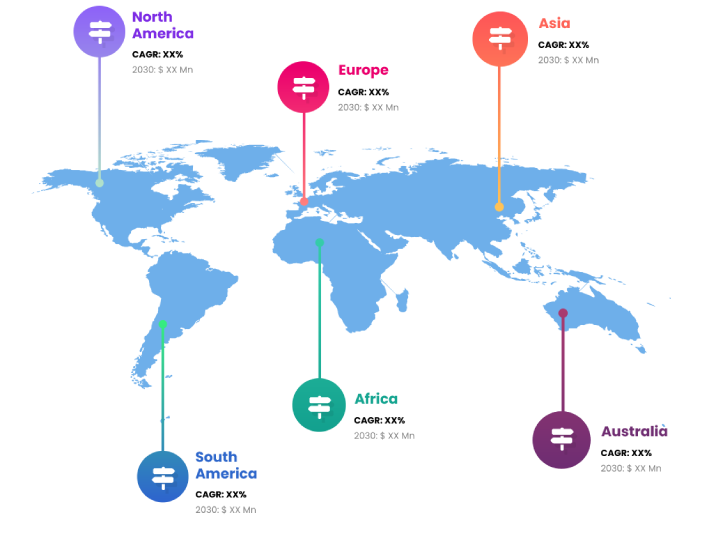
Users can make eye-catching visual presentations and manage on-screen data using touchscreen interactions on a computer using a mounted device called an interactive display. There are several sizes of interactive LCD displays that are suitable for collaborative situations, from small preschool classrooms to large corporate boardrooms. Modern technology companies have developed an interactive flat-panel display to help educational and business professionals maximize the potential of communicating on a larger scale because more than 75% of Americans own a cell phone and an estimated 90% of Americans own a smartphone of some kind. New interactive display technology has been gaining popularity in businesses and educational institutions since the early 1990s.
Future market expansion is anticipated to be significant, largely as a result of rising interest in virtual classrooms and expanding use of interactive displays such video walls and tables. Transit areas and public transportation, including train stations and airports, use these interactive TV displays and dynamic tables. Instead of using external devices like a mouse or keyboard, interactive or on-screen displays accept user commands using a finger or stylus. The interactive display includes screens that show text, images, and videos, among other types of information. Several industries, including retail, healthcare, the hospitality sector, and education, use these displays.
By making the learning process more interactive, new technologies used in the education sector, such as touchscreen white boards and tables, projection screens, and kiosks in classrooms, increase student engagement and improve learning retention. Additionally, by fostering group learning, participation, and creativity in the classroom as well as feedback not only between professors and students but also among students themselves, these displays help to maintain a friendly communication atmosphere. Furthermore, the use of games, music, and video clips in the classroom is made possible by these display technologies. Digital learning, which enables students to study using pertinent digital materials, has become more popular among students in recent years.
The use of technology in the classroom, including projectors, interactive whiteboards, laptops, tablets, and mobile phones, is significantly improving and making the learning process more participatory. Interactive displays aid in preserving a communication atmosphere that promotes feedback from students to other students as well as between professors and students. However, by adding teachings in the form of games, gamification improves the lecture delivery format. Students learn better when they are completely involved and have a hands-on learning experience, according to research from various institutions and colleges. Whether it's a Google Earth tour of the Amazon jungle or a math problem-solving exercise, interactive displays enable multimodal learning.
By fusing technology and education, interactive whiteboards played a crucial role in improving education. IWBs once had a higher market penetration, however the product has failed to be implemented. One significant factor inhibiting the market expansion for interactive displays is the lack of adoption of IWBs by teachers in their regular teaching practices. The intricacy of the system and the growing popularity of interactive flat panels are two main factors contributing to teachers' lack of enthusiasm in employing interactive display goods. Furthermore, only the greatest technical support teams are capable of fixing any technological issue. IWB interest was also low as a result of this. The teachers' willingness to change their practice is observed to be waning, hence the eventual effectiveness of IWBs completely depends on this.
The panel type, technology, screen size, application, end user, and region are some of the sectors used to study the trends in the worldwide interactive display market. The market is segmented into flat panel displays, flexible panel displays, and transparent panel displays based on the kind of panel used. It is divided into OLED, quantum dots, LED, and LCD categories based on technology. It is divided into interactive table, interactive monitor, interactive kiosk, interactive whiteboard, and video wall categories according to application. Healthcare, retail, BFSI, military & defense, transportation, education, and others are the different end-user segments of the market. The market is divided into four different geographic areas for analysis: North America, Europe, Asia-Pacific, and Latin America & Middle East (LAMEA).
Report Coverage
Global Interactive Display research report categorizes the market for global based on various segments and regions, forecasts revenue growth, and analyzes trends in each submarket. Global Interactive Display report analyses the key growth drivers, opportunities, and challenges influencing the global market. Recent market developments and Interactive Display competitive strategies such as expansion, product launch and development, partnership, merger, and acquisition have been included to draw the competitive landscape in the market. The report strategically identifies and profiles the key Interactive Display market players and analyses their core competencies in each global market sub-segments.
| REPORT ATTRIBUTES | DETAILS |
|---|---|
| Study Period | 2017-2030 |
| Base Year | 2022 |
| Forecast Period | 2022-2030 |
| Historical Period | 2017-2021 |
| Unit | Value (USD Billion) |
| Key Companies Profiled | SAMSUNG ELECTRONICS CO. LTD., Sharp Corporation (Foxconn), Horizon Display Inc, NEC Corporation, Crystal Display Systems Ltd, ViewSonic Corporation, Planar Systems (Leyard Optoelectronic), Baanto International Ltd., LG Electronics, Elo Touch Solutions, Inc. (Crestview), Sony Corporation, Panasonic Corporation, BenQ Corporation, Promethean World Ltd., SMART Technologies ULC, Hitachi, Ltd., Vestel Ticaret A.S., Horizn Studios AG, Newline Interactive, Inc., Prysm Systems, Inc., TouchMagix Media Pvt. Ltd., Boxlight Corporation, Mimio (a Newell Brands company). |
| Segments Covered | • By Product |
| Customization Scope | Free report customization (equivalent to up to 3 analyst working days) with purchase. Addition or alteration to country, regional & segment scope |
Key Points Covered in the Report
- Market Revenue of Interactive Display Market from 2021 to 2030.
- Market Forecast for Interactive Display Market from 2021 to 2030.
- Regional Market Share and Revenue from 2021 to 2030.
- Country Market share within region from 2021 to 2030.
- Key Type and Application Revenue and forecast.
- Company Market Share Analysis, Interactive Display competitive scenario, ranking, and detailed company
profiles. - Market driver, restraints, and detailed COVID-19 impact on Interactive Display
Market
Competitive Environment:
The research provides an accurate study of the major organisations and companies operating in the global Interactive Display market, along with a comparative evaluation based on their product portfolios, corporate summaries, geographic reach, business plans, Interactive Display market shares in specific segments, and SWOT analyses. A detailed analysis of the firms' recent news and developments, such as product development, inventions, joint ventures, partnerships, mergers and acquisitions, strategic alliances, and other activities, is also included in the study. This makes it possible to assess the level of market competition as a whole.
List of Major Market Participants
SAMSUNG ELECTRONICS CO. LTD., Sharp Corporation (Foxconn), Horizon Display Inc, NEC Corporation, Crystal Display Systems Ltd, ViewSonic Corporation, Planar Systems (Leyard Optoelectronic), Baanto International Ltd., LG Electronics, Elo Touch Solutions, Inc. (Crestview), Sony Corporation, Panasonic Corporation, BenQ Corporation, Promethean World Ltd., SMART Technologies ULC, Hitachi, Ltd., Vestel Ticaret A.S., Horizn Studios AG, Newline Interactive, Inc., Prysm Systems, Inc., TouchMagix Media Pvt. Ltd., Boxlight Corporation, Mimio (a Newell Brands company).
Primary Target Market
- Market Players of Interactive Display
- Investors
- End-users
- Government Authorities
- Consulting And Research Firm
- Venture capitalists
- Third-party knowledge providers
- Value-Added Resellers (VARs)
Market Segment:
This study forecasts global, regional, and country revenue from 2019 to 2030. INFINITIVE DATA EXPERT has segmented the global Interactive Display market based on the below-mentioned segments:
Global Interactive Display Market, By Panel Type
Flat Panel
Flexible Panel
Transparent Panel
Global Interactive Display market, By Application
Interactive Table
Interactive Monitor
Interactive Kiosk
Interactive Whiteboard
Video Wall
Global Interactive Display Market, By End User
Healthcare
Retail
BFSI
Military & Defense
Education
Other
Global Interactive Display market, Regional Analysis
- Europe: Germany, Uk, France, Italy, Spain, Russia, Rest of Europe
- The Asia Pacific: China,Japan,India,South Korea,Australia,Rest of Asia Pacific
- South America: Brazil, Argentina, Rest of South America
- Middle East & Africa: UAE, Saudi Arabia, Qatar, South Africa, Rest of Middle East & Africa
You will get in-depth and extensive interactive display market market research and competitor analysis for your business to help you develop more profound insights into the interactive display market Market.
Through INFINITIVE Data Expert is a professional Market Research services, I will identify the interactive display market market size, demand & opportunities, growth rate, and target audience with a comprehensive analysis of your competitors.



